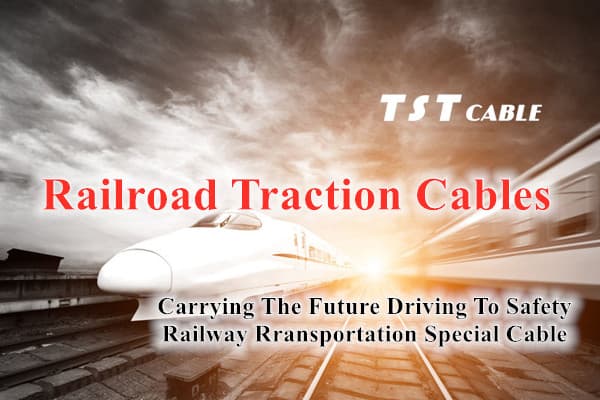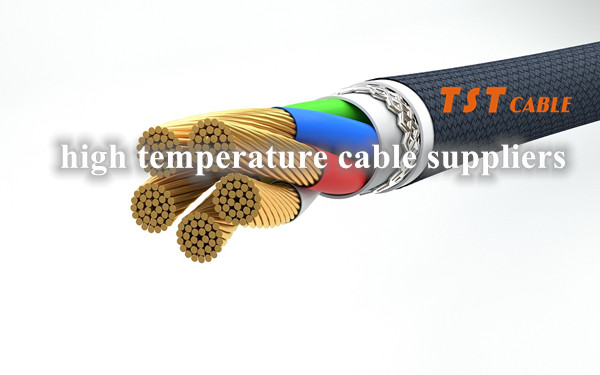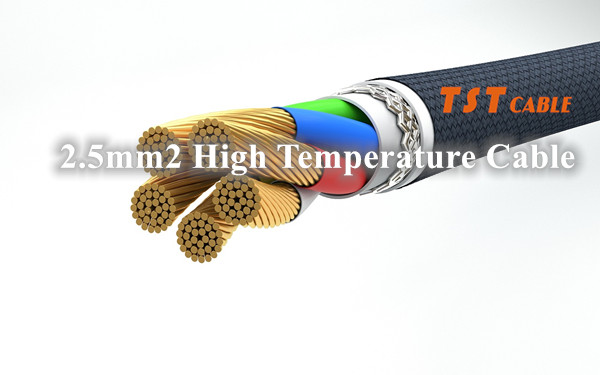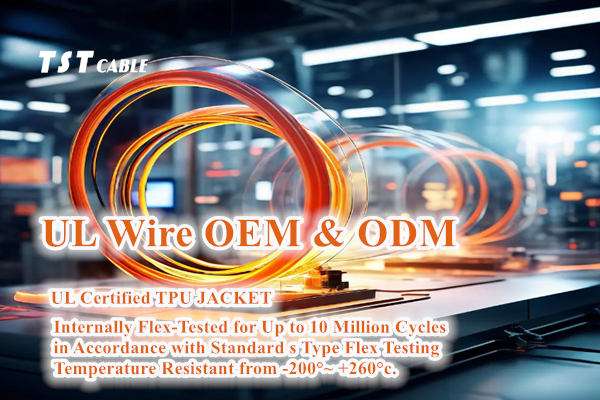
Metro is the artery of a city, providing constant power for its operation. A city with a well-developed metro network is often regarded as a symbol of modernization and efficiency, which helps to enhance the overall image and attractiveness of the city.
I. Importance of railway cables
Wires and cables in the subway system are key components to ensure the safe and efficient operation of the subway. They are not only responsible for power transmission, but also undertake important tasks such as signal transmission and control system operation. Therefore, it is crucial to choose high-quality, stable performance wire and cable.
Second, the application of railway cable
Subway tunnels, subway stations, equipment installation, fire and other construction requires a large number of power cables (rail transit is usually used in a strong power supply), communication cables, lighting cables, tunnel cables and so on.
Most of the cables used in the subway require low smoke-free (low) halogen, flame retardant, fire-resistant, oil-resistant, UV-resistant, moisture-resistant, waterproof, mildew-proof, rodent-resistant, etc., and the South also requires anti-termite. High and low voltage power cables, low smoke halogen free cables, mica tape insulated fire resistant cables, mineral insulated fire resistant cables, etc., which are suitable for the hot and humid climate and termite-prone environment in the south.
Railway Power cable
Power cable is one of the essential and important elements in subway construction, mainly used for power transmission and connection of power equipment. There are many varieties of power cables in metro projects, such as DC traction cables, flame retardant cables, fire-resistant cables, green cables, self-control temperature cables, overhead insulated cables, rubber cables, cross-linked polyethylene insulated cables and so on.
Railway Control Cables
Control cables are mainly used for electrical signal transmission between tracking, control and monitoring systems. Control cables in metro projects mainly include encoder cables, sensor cables, electronic control system cables and so on. These cables usually require an outer jacket to protect the cables from the external environment.
Railway Communication Cables
Communication cables are another important type of cable in metro projects and are mainly used in communication systems such as telephony, networking and broadcasting. The use of communication cables is more demanding and needs to be characterized by a large bandwidth, low transmission loss, and anti-interference properties. The communication cables usually used in metro projects include coaxial cables, fiber optic cables, twisted pair cables, etc.
Railway Signal cable
Signal cable is mainly used for signal transmission between subway signaling equipment, such as track circuits, turnout control signals, signal acquisition and processing. Signal cables usually have a small transmission power and frequency, their main task is to transmit different types of digital signals, so the impedance, transmission delay and other characteristics of the higher requirements.
Third, the characteristics of the railway cable requirements
Wire and cable for subway usually need to meet the following characteristics:
Low-smoke non- (low) halogen: in case of fire, to reduce the generation of toxic fumes.
Flame retardant, fire-resistant: to ensure that the cable in the fire can maintain normal operation for a certain period of time.
Oil-resistant, UV-resistant, moisture-resistant, water-resistant: to adapt to a variety of complex conditions in the subway environment.
Mold, rodent: in the southern hot and humid environment, these characteristics are particularly important.
Fourth, railway cables and cable testing project:
TST CABLES In order to ensure the quality and safety of rail transit wire and cable, a series of rigorous testing is required, including:
Conductor structure, conductor resistance, insulation/inner jacket/sheath thickness, mechanical properties of insulation/sheath before and after air oven aging, thermal extension test of EPR, HEPR and XLPE insulation and elastomer sheath, insulation resistance measurement, voltage test of finished cables, aging test of additional segments of finished cables, weightlessness test of ST2-type polyvinyl chloride sheaths, thermal shock test of insulation sheaths, high temperature pressure test of insulation sheaths, low temperature bending test of insulation sheaths. test, low temperature bending test of insulation sheath, low temperature tensile test of insulation sheath, low temperature impact test of insulation sheath, elastomer oil immersion test, shrinkage test of XLPE insulation/PE sheath, outer diameter, strippable test of insulation shielding, single flame retardant test of cables, partial discharge test of cables, marking, ozone-resistance test of insulation, measurement of carbon black content of polyethylene sheath, bundled flame retardant test of cables, smoke density test, acid gas content test, fluorine resistance test, smoke density test, acid gas content test, fluorine resistance test, smoke density test, smoke density test, fluorine resistance test, ozone resistance test of finished cables test, acid gas content test, fluorine content test, pH and conductivity test, armored wire and metal tape measurement, DC voltage test, water permeability test, lead jacket thickness measurement, semiconducting shielding resistivity, thermal stability test, wrap-around tape overlap rate, wrap-around gap rate, wrap-around lining layer and/or wrap-around tape cushioning layer of the total thickness of the measurement of the temperature of the cable conductor, fire characteristics, termite, rat gnawing test etc.
V. Railway transportation wire and cable related testing standards
CRCC Certification
China Railways Production Certification Center (China Railways Certification Center referred to as “CRCC”) is formed on the basis of the Ministry of Railways Product Quality Supervision and Inspection Center, approved by the Certification and Accreditation Administration of the State Council, engaged in the third-party certification body for railroad product certification.CRCC (China Railways Certification Center) is the authority responsible for railway product certification. CRCC (China Railway Certification Center) is an authoritative organization responsible for railroad product certification, and its certification scope covers railroad rolling stock and its parts, railroad electrification equipment, railroad communication and signaling equipment, etc. TST CABLES Railway Transportation Cables have all passed the certification of CRCC, which not only means that the quality has been strictly controlled, but also means that the performance and safety of the products have been fully guaranteed and verified by the market.
Power cable class standard
GB/T12706.1-2020 Rated voltage 1kV (Um=1.2kV) to 35kV (Um=40.5kV) extruded insulated power cables and accessories Part 1: Rated voltage 1kV (Um=1.2kV) and 3kV (Um=3.6kV) cables
GB/T12706.2-2020 Rated voltage 1kV (Um=1.2kV) to 35kV (Um=40.5kV) extruded insulated power cables and accessories Part 2: Rated voltage 6kV (Um=7.2kV) to 30kV (Um=36kV) cables
GB/T12706.3-2020 Rated voltage 1kV (Um=1.2kV) to 35kV (Um=40.5kV) extruded insulated power cables and accessories Part 3: Rated voltage 35kV (Um=40.5kV)) cables
GB/T11017.1-2014, GB/T11017.2-2014 Cross-linked polyethylene insulated power cables with rated voltage 110kV (Um=126kV) and accessories thereof
GB/T18890.1-2015, GB/T18890.2-2015 Cross-linked polyethylene insulated power cables with rated voltage 220kV (Um=252kV) and their accessories
GB/T31840.1-2015 Aluminum alloy core extruded-coated insulated power cables with rated voltages from 1kV (Um=1.2kV) to 35kV (Um=40.5kV) Part 1: Cables with rated voltages of 1kV (Um=1.2kV) and 3kV (Um=3.6kV)
GB/T31840.2-2015 Aluminum alloy core extruded insulated power cables with rated voltage from 1kV (Um=1.2kV) to 35kV (Um=40.5 kV) Part 2: Cables with rated voltage from 6kV (Um=7.2kV) to 30kV (Um=36kV)
GB/T31840.3-2015 Rated voltage 1kV (Um=1.2kV) to 35kV (Um=40.5kV) aluminum alloy core extruded insulated power cables Part 3: Rated voltage 35kV (Um=40.5kV) cables
Control cable standards
GB/T 9330-2020 Control cables
Flame retardant standards
GB/T 19666-2019 Flame-retardant and fire-resistant wire and cable general rules
GB/T 18380.12-2008 Single flame retardant performance
GB/T 17650.2-1998 Halogen-free performance
GB/T 19216.21-2003 fire resistance performance
GB/T 17651.2-1998 Low smoke performance
GB 31247-2014 Cable and fiber optic cable combustion performance classification
Communication standards
YD/T1173-2016 Flame-retardant and fire-resistant flexible cables for communication power supply
Railway transportation standards
GB/T12528-2008 Cables for rail transit vehicles with AC rated voltage of 3kV and below
GB/T 25085.3-2020 Road vehicles Automotive cables Part 3: Dimensions and requirements for single-core copper conductor cables with AC 30 V or DC 60 V
GB/T 25087-2010 Road vehicles Round, shielded and unshielded 60V and 600V multi-core sheathed cables
Anti-rodent and anti-termite standards
B/T10696.10-2011 (wire and cable mechanical and physical and chemical performance test methods Part 10; (rat gnawing test) group method test)
JB/T10696.9-2011 (Test Methods for Mechanical and Physical and Chemical Properties of Wire and Cable Part 9; (Termite Test))
Mining cable standard
GB/T12972-2008 Mining Rubber Flexible Cable
The world’s leading manufacturer of rail transportation cables– TST CABLES
TST CABLES is a manufacturer in China focusing on the production of high-temperature wires and cables, the company’s production of wires and cables have been certified by CRCC, and all the performance meets the requirements of the International Electrotechnical Commission, a number of national standards, industry, and the railroad cables are in line with a series of international and domestic standards, such as UL, EN, CUL, CSA, VDE, CCC, IATF 16949, ISO 9001, ISO 14001 ROHS, CRCC, REACH, EN50264, EN50382, EN50306, EN45545-2, TB/T1484.3 and so on. These standards specify the smoke and toxicity requirements of cables under fire conditions, as well as the electrical properties, mechanical properties and other aspects of the cable’s indicators.
TST CABLES has been focusing on cable applications and solutions in the field of rail transportation for 11 years, and its products cover EN50264 series, EN50306 series, EN50382 series, data cables, cross-linked power cables, mineral insulated cables, sensor cables, jumper cables, high-temperature-resistant cables, PEEK cables and so on, and it can also process customized cables according to the user’s needs for the required high-temperature-resistant ( 1400℃), low temperature resistance (-190℃), corrosion resistance, anti-electromagnetic interference and other special cables. At present, we have loaded more than 500,000 cables on more than 3,500 high-speed rail coaches, running mileage of more than 6,000,000 kilometers.
TST CABLES is committed to provide you with a full range of technical support and solutions. In the future, TST CABLES will continue to plough into the fields of rail transportation, oil and gas, shipping, medical, nuclear power, wind power and aviation, and contribute to the development of the cable industry with more high-quality products. If you have any demands or questions about rail transportation cables, please feel free to contact us by email.
Also available in:
English





